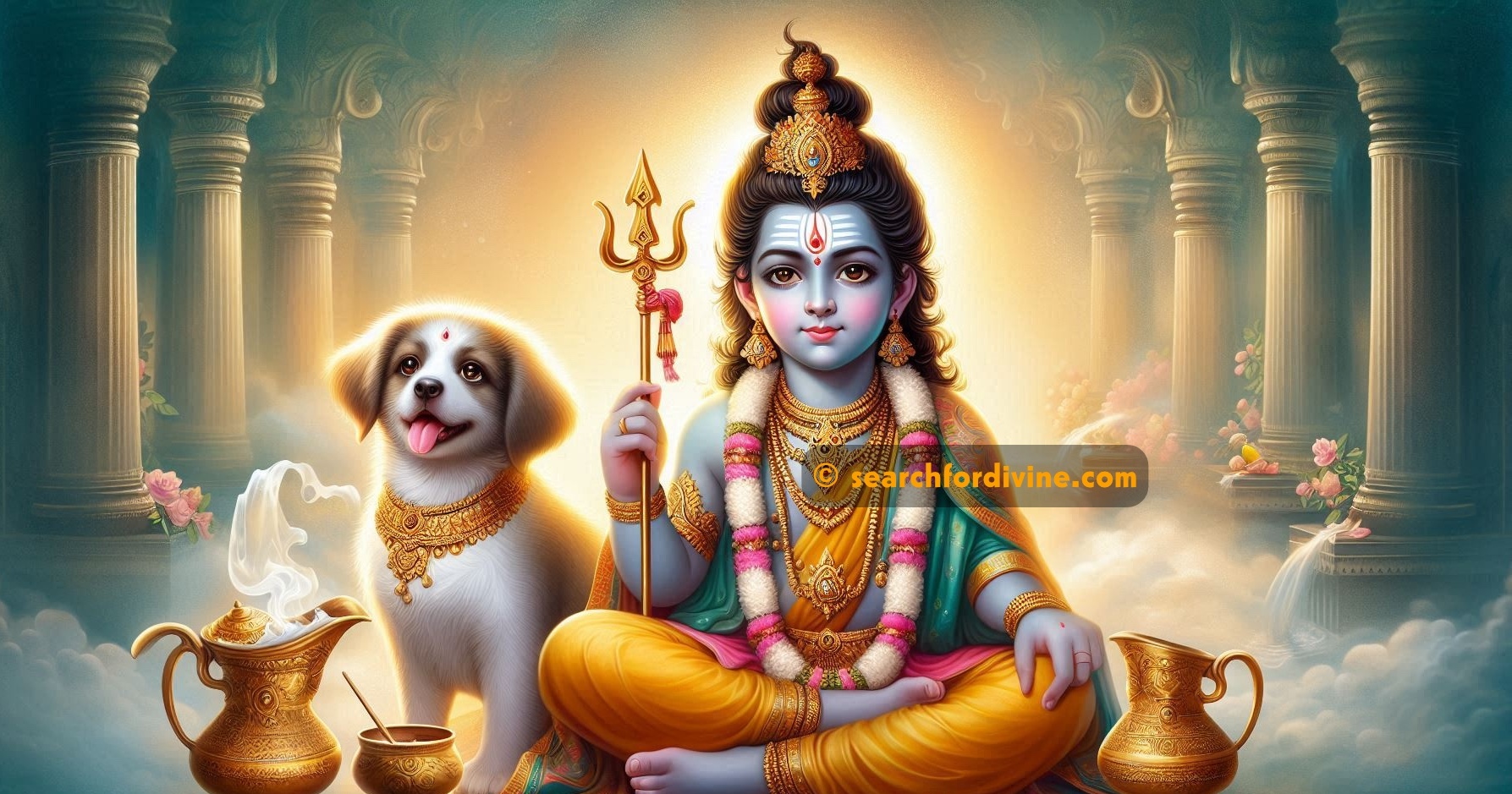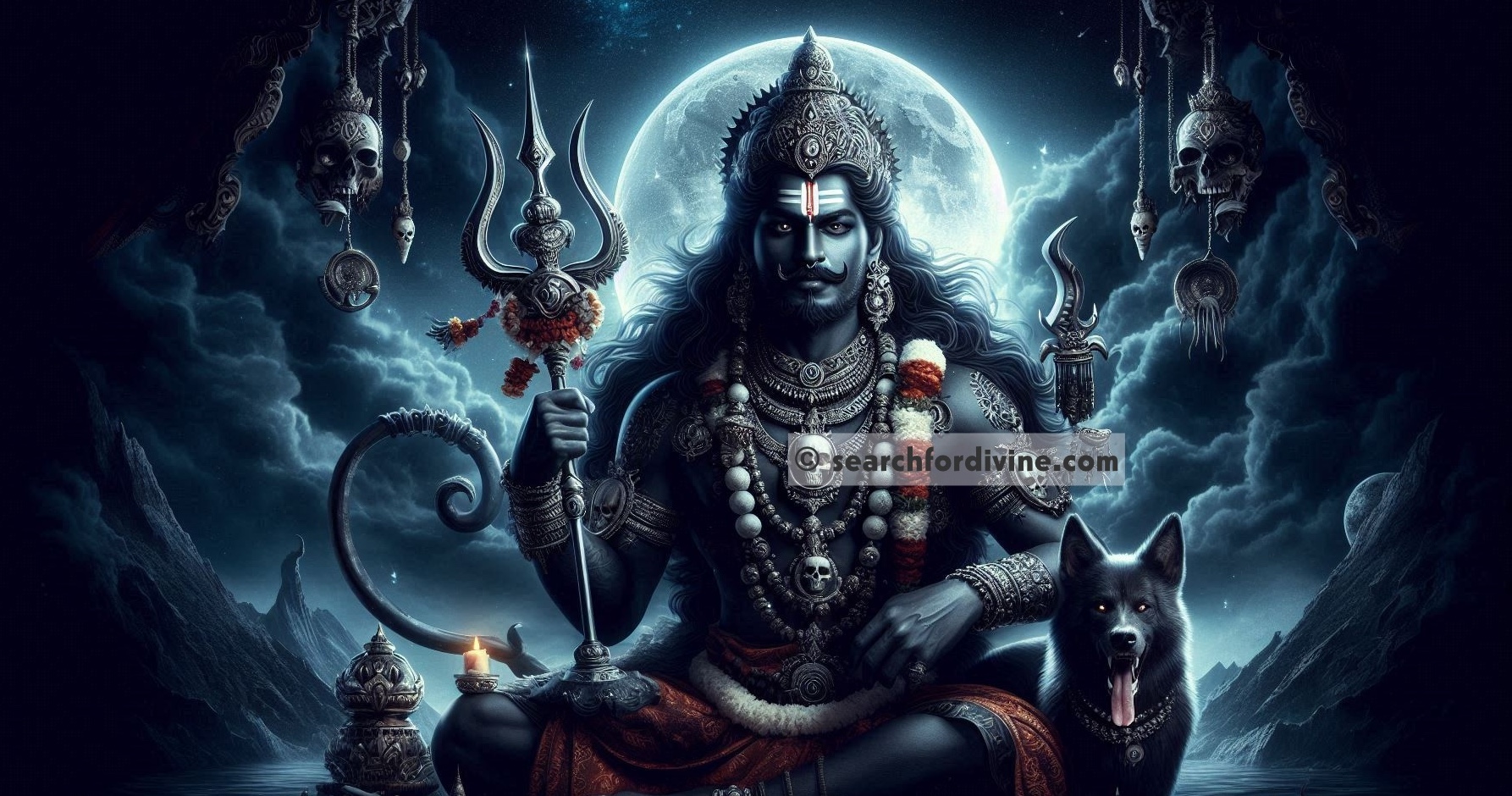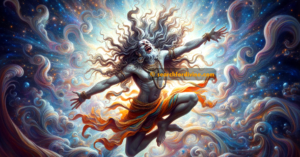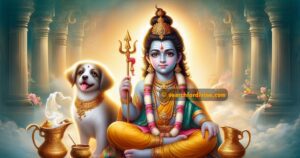Difference Between Kaal Bhairav and Batuk Bhairav
When we explore Lord Shiva’s fierce manifestations, Bhairava emerges as a powerful protector and guide. However, Bhairava has many forms, with Kaal Bhairav and Batuk Bhairav being two of the most significant. Although these forms originate from the same divine energy, they embody different characteristics, symbolism, and roles. Let’s explore their nature, mythology, and how they are depicted in Hindu spirituality.
Who is Bhairava?

कालभैरव: सर्वदेवेश्वर:।
बालभैरवो धर्मपालक:॥
भैरवस्य रूपद्वयं, कालश्च बालश्च।
Kaal Bhairava is the Lord of all deities; Batuk Bhairava is the protector of righteousness. Bhairava takes two forms, the fierce (Kaal) and the childlike (Batuk).
कालभैरवः श्रेष्ठो बालभैरव रूपधारी।
द्वयं च भैरवरूपं, रक्षणाय जगतां नृणाम्॥
Kaal Bhairava, the supreme one, and Batuk Bhairava in child form, are the two manifestations of Bhairava, protecting the world and humanity.
Bhairava, a form of Lord Shiva, represents the destructive and protective aspects of the divine. The term “Bhairava” is derived from the Sanskrit word “Bhairavi,” which means “terrifying” or “fearsome.” Bhairava governs time, karma, and the cosmic order, guiding devotees to overcome their fears and challenges. Understanding Kaal Bhairav and Batuk Bhairav reveals the many ways the divine supports us in our spiritual journey.
Origins and Mythological Background

भक्तिवासि मनोवाञ्छित दायकोऽसि भैरव।
बालक: कालभैरवो नाथोऽसि सर्वदा।
O Bhairava, you reside in devotion and fulfill desires. As the child (Batuk) and the fierce (Kaal), you are the Lord always.
कालो रूपं भैरवस्य, बालोऽपि तस्य रूपकम्।
द्वौ भैरवौ संसारस्य, रक्षकोऽथ दुःखहा॥
Kaal is the form of Bhairava, and the child is also his form. These two Bhairavas are the protectors of the world, the removers of sorrows.
Kaal Bhairav originated from Lord Shiva’s anger. When Brahma, the creator of the universe, became arrogant, Shiva took the form of Kaal Bhairav to remind him of the power of time and karma. According to the shastras, Kaal Bhairav cut off one of Brahma’s five heads, teaching a lesson in humility. This mythological story illustrates Bhairava’s role in upholding cosmic laws and justice.
Batuk Bhairav, on the other hand, symbolizes Shiva’s child-like, friendly aspect. Legend has it that Shiva took this form to show that divine power can be gentle and nurturing. His appearance as a young boy reminds devotees that even the most fearsome deities have a compassionate side.
Nature and Characteristics
Kaal Bhairav is fierce, embodying Shiva’s aspect as the Lord of Time (Kaal). He is known to be the guardian of cosmic order, ensuring that everyone faces the consequences of their actions (karma). His nature is intense and protective, representing the force that consumes all, including fear and negativity.
In contrast, Batuk Bhairav is kind, approachable, and nurturing. This child-like form of Bhairava has a joyful and calming presence. He embodies simplicity and offers support to devotees in their daily lives, helping them achieve success, prosperity, and peace.
Appearance and Iconography
Kaal Bhairav is often depicted with a terrifying, dark complexion. He has multiple arms holding weapons such as a trident, sword, drum, and skull. His garland of skulls and fierce eyes embody the fearsome aspect of time. Kaal Bhairav’s vahana (vehicle) is a black dog, which symbolizes loyalty, protection, and the ability to see beyond illusion.
Batuk Bhairav is depicted as a youthful boy with a pleasant expression. He holds a trident and a drum in his hands. His calm and innocent look contrasts sharply with the fierce nature of Kaal Bhairav. Batuk Bhairav’s minimal ornaments symbolize purity, simplicity, and a nurturing approach to life.
Symbolism
Kaal Bhairav represents the inevitability of time and the consequences of karma. His fierce form symbolizes the destruction of arrogance, ignorance, and negative forces. The weapons he holds signify his power to cut through illusions, fears, and obstacles, guiding devotees toward the path of righteousness.
Batuk Bhairav, on the other hand, symbolizes the child-like innocence present in divine power. His appearance reminds us that the divine is not always fearsome; it can also be gentle, kind, and supportive. Batuk Bhairav embodies the joy and simplicity that helps us navigate life’s challenges.
Worship and Rituals
Kaal Bhairav is worshipped through rituals involving offerings like black sesame seeds, alcohol, and oil lamps. Devotees often feed black dogs, which are sacred to Kaal Bhairav, to seek his blessings. The intense nature of his worship practices helps devotees overcome fears, face challenges, and remove obstacles in life.
Batuk Bhairav is worshipped more simply. Offerings include sweets, fruits, and flowers. His worship is accessible to everyone, and his blessings are sought for success, prosperity, and protection of the household. His rituals focus on peace and joy, making him an ideal deity for daily support and comfort.
Their Role and Significance in Everyday Life
Kaal Bhairav plays the role of a cosmic guardian. His fierce nature helps devotees conquer fears, overcome difficulties, and destroy negative influences in their lives. Worshipping him is believed to grant courage, protection, and the strength to face life’s toughest challenges.
Batuk Bhairav is seen as a nurturing guide in everyday life. He brings joy, comfort, and success to his devotees. Unlike Kaal Bhairav, his energy is more accessible and gentle, making him the ideal form to invoke for prosperity, peace, and household well-being.
Worship and Benefits
Worship of Kaal Bhairav helps devotees overcome fear, anxiety, and negative influences. By invoking his energy, devotees can remove obstacles in their spiritual and material lives. Worshipping Kaal Bhairav is also believed to protect against misfortune and bad luck.
Worship of Batuk Bhairav brings prosperity, joy, and harmony to the household. His blessings are sought for a successful and happy life. Since Batuk Bhairav represents simplicity and innocence, his worship focuses on achieving comfort, peace, and daily support in life’s endeavors.
Cultural Depiction and Regional Significance
Kaal Bhairav holds great cultural significance, especially in the city of Kashi (Varanasi), where he is considered the guardian deity. His presence is also prominent in various forms of Hindu art and temple sculptures across India. In some regions, he is depicted in fierce dance forms, symbolizing the cosmic cycle of creation and destruction.
Batuk Bhairav is particularly revered in the Nath tradition and tantric practices. His form is depicted in simple, joyful sculptures and paintings, symbolizing divine innocence. The worship of Batuk Bhairav is popular in households, especially among those seeking daily guidance, success, and harmony.
Summary of Differences
| Aspect | Kaal Bhairav | Batuk Bhairav |
| Meaning of Name | Lord of Time | Child Bhairava |
| Nature | Fierce, Protective | Kind, Nurturing |
| Appearance | Dark, multi-armed with weapons | Youthful, calm, and friendly |
| Symbolism | Destruction of negativity and arrogance | Innocence, joy, and daily guidance |
| Worship Offerings | Black sesame, alcohol, oil lamps | Sweets, fruits, flowers |
| Cultural Significance | Guardian of Kashi, enforcer of karma | Protector of households |
Kaal Bhairav and Batuk Bhairav represent two aspect of the same divine energy. While Kaal Bhairav embodies the fierce force of time, destruction, and protection, Batuk Bhairav reflects the divine’s nurturing and comforting side. As per one’s individual needs, devotees can seek guidance and blessings from the form of Bhairava most suitable for their spiritual journey.
May the blessings of both Kaal Bhairav and Batuk Bhairav guide you through the path of courage, joy, and prosperity.









Kaal Bhairav Ashtakam